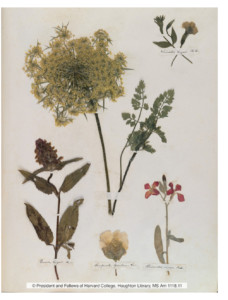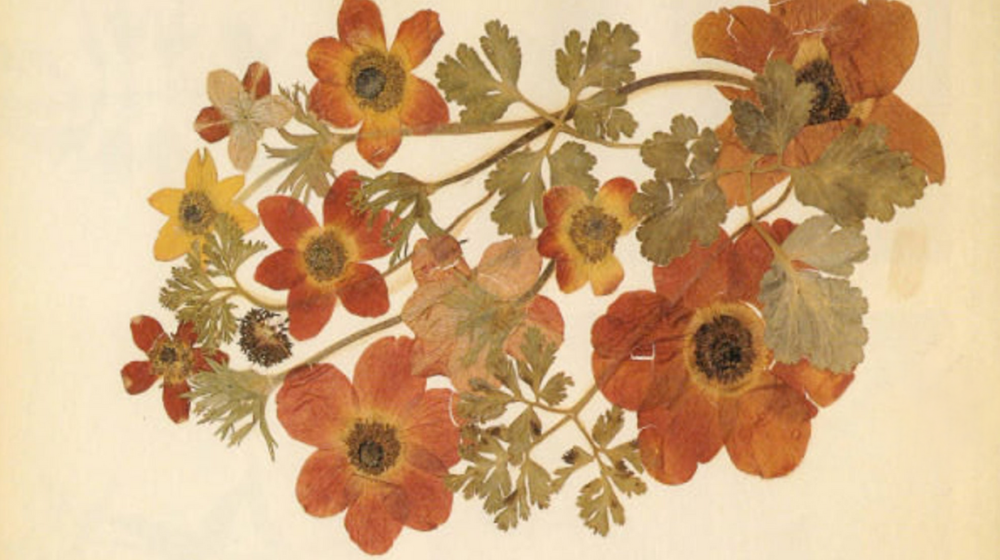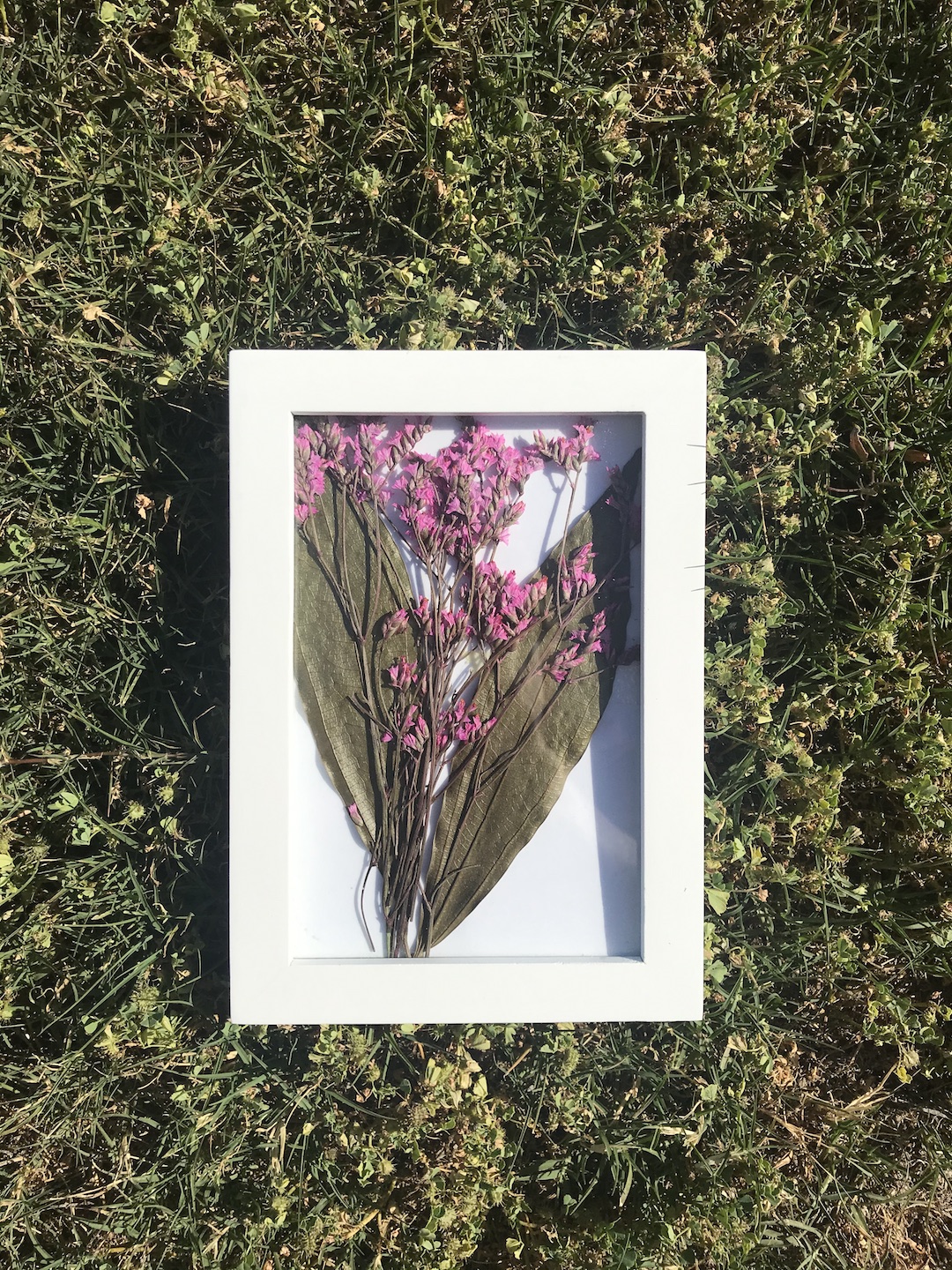Victorian Dried Plants & Flowers
People have always collected and dried leaves and flowers — for medicines, for use in cooking, and for their scent. During the Enlightenment, scientists tried to collect and catalog every plant on earth. Live plants were collected in botanical gardens and arboreta.

Drying and pressing plants and flowers was another way to get specimens home safely after long voyages.
Victorians took a more romantic approach. They wanted to include nature in everyday life and turned pressing and drying plants into an art form. The image here with the black background is a detail of a picture in the Rosson House Museum.
 Emily Dickinson arranged dried flowers in a scrap book that she called a herbarium.
Emily Dickinson arranged dried flowers in a scrap book that she called a herbarium.
In 1865, Gertrude Tredwell pressed flowers and even seaweed into bouquets and wreaths to commemorate a summer vacation, and you can, too — although you’re not likely to find a lot of seaweed in Arizona outside of a sushi bar!
For more reading, Atlas Obscura has a great article about preserving pressed flowers from your walks during quarantine, available here.
make your own art with dried plants!
Supplies:
Flowers and other plant materials
Tissue or wax paper
Scissors
2 heavy books
Steps:
- Take a walk and look closely at the plant life in your yard and in your neighborhood. Start collecting leaves and other plants you find along the way.Plant picking etiquette:
Ask permission before you pick.
Take just 1 or 2 and leave lots for others to enjoy.
Look for petals on the ground first. - Back at home, go through your collected plants – what did you find?
Tip: The Victorians would collect plant specimens so they could identify different types. If you don’t know what a particular plant is, try using the PlantSnap app!
- Once you pick your favorites, arrange them how you would like them to be displayed. Place the plants between two pieces of wax paper, then carefully place in between the two heavy books.
- Leave your plants for one to two weeks so they can dry.
- Once your plants are dry, try making a card for a friend or framing them for your home. You might even use them in our scrapbook activity!





